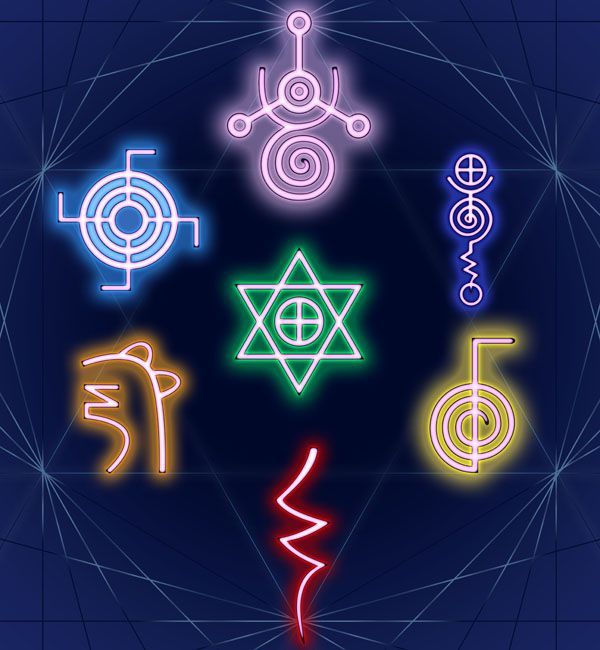In modern society, the paradigm of health has undergone a profound transformation. Individuals increasingly seek alternatives to conventional medical practices, gravitating toward holistic healing approaches. Central to these modalities are holistic healing symbols, which serve as conduits for energy, intention, and ancient tradition. This article endeavors to elucidate the significance of these symbols, explore their applications, and examine their cultural context within holistic healing practices.
The Confluence of Symbols and Healing: An Overview
Holistic healing symbolizes a comprehensive approach to wellness, recognizing the interconnectedness of body, mind, and spirit. This perspective embraces not only physiological health but also emotional and spiritual well-being. Integral to this approach are the symbols that practitioners utilize to evoke healing energies and facilitate transformations.
These symbols vary across different healing traditions, each imbued with unique meanings. For instance, in Reiki, a Japanese healing practice, symbols are used to channel energy, promote relaxation, and foster emotional clarity. The invocation of symbols often occurs during meditation or energy work, creating a profound bridge between the practitioner and client, effectively cultivating resilience and balance.
Symbolic Language: The Foundation of Healing Practices
The use of visual and auditory symbols can be traced back through millennia, where ancient cultures assigned significant meaning to shapes, colors, and sounds. This symbolic language taps into the collective unconscious, enabling a deeper connection between the practitioner and the recipient. In holistic healing, symbols are perceived not as mere representations but as powerful tools of intervention and transformation.
Within various cultures, symbols such as the lotus flower, infinity symbol, and mandalas have transcended time and space to convey unity and transformation. The lotus flower, for example, represents purity and spiritual awakening, often associated with Eastern philosophies. As it rises from murky waters to bloom in sunlight, it mirrors the journey of overcoming adversity toward enlightenment.
Contrarily, the infinity symbol embodies the concept of wholeness, underscoring the infinite nature of energy and existence. In holistic healing, this symbol often signifies balance between physical, emotional, and spiritual dimensions. Such symbols are not merely decorative; they invoke states of consciousness that facilitate healing and personal growth.
The Energetic Dimensions: How Symbols Function
The interplay between symbols and energy forms the crux of holistic healing modalities. When practitioners engage with symbols, they tap into the vibrational frequency associated with those symbols, directing this energy toward healing outcomes. This energetic exchange is predicated on the belief that all entities—human or otherwise—possess inherent energy fields that can either facilitate or hinder optimal health.
In Reiki, practitioners employ sacred symbols to direct healing energy toward specific areas, whether physical ailments or emotional distress. The first Reiki symbol, Cho Ku Rei, is a powerful tool used to amplify and focus energy. The etymology of this symbol signifies “place the power here,” allowing practitioners to channel energy precisely where it is needed. The conscious intention behind the symbol’s use is critical, transforming it into a potent force for healing.
Furthermore, symbols may also serve to create sacred spaces. The act of drawing a symbol in the air or on a surface can delineate boundaries, such as a treatment area, effectively enhancing the sacredness of the healing environment. This ritualistic aspect underscores the dynamic relationship between space, intention, and healing energy.
Cultural Implications: A Tapestry of Meaning
Delving into the diverse array of holistic healing symbols inevitably unveils a rich tapestry of cultural narratives. Each tradition carries its unique historical weight, interwoven with philosophical tenets that inform the practice. These cultural nuances are critical to understanding the symbols’ applications and their resonance among diverse populations.
In indigenous cultures, such as Native American traditions, symbols often reflect deep connections to nature and the cosmos. For instance, the Medicine Wheel symbolizes the cyclical nature of life, emphasizing balance, harmony, and interconnectedness. It serves as a navigational tool for healing, guiding individuals on their personal journeys while honoring the teachings of ancestors.
Similarly, in Eastern philosophies, practitioners of yoga and meditation utilize mandalas as symbols of the universe, aiding in mindfulness practices and awareness of the self. These intricate designs encapsulate the spiritual process of creation and dissolution, encouraging practitioners to perceive their place in the cosmic framework. Thus, symbols in holistic healing transcend mere visual or auditory elements; they encapsulate entire ethical and spiritual paradigms.
The Evolving Landscape of Holistic Healing Symbols
As the popularity of holistic healing continues to burgeon, there emerges a contemporary evolution of symbols that respond to modern sensibilities. New symbols have emerged to encapsulate the essence of modern challenges, including technology-induced stress and existential anxieties. The creation of symbols often reflects societal shifts, crafting avenues for healing that resonate with contemporary experiences.
Furthermore, the global exchange of healing modalities encourages a cross-pollination of symbols. Practitioners increasingly blend various traditions, resulting in hybrid healing practices that amalgamate the strengths of different modalities. While this creates rich and diverse healing experiences, it also raises pertinent questions regarding cultural appropriation and authenticity.
The significance of maintaining respectful practices cannot be overstated. Practitioners must approach the use of symbols with cultural sensitivity, ensuring that their integration honors the traditions from which they originate. This responsibility fosters a more ethical framework for holistic practices, thereby enhancing the overall efficacy of healing endeavors.
Conclusion: Bridging Ancient Wisdom with Contemporary Healing Practices
The exploration of holistic healing symbols reveals their multifaceted significance as conduits for energy, intention, and cultural narratives. As individuals seek alternative pathways toward wellness, these symbols can offer profound insights into personal journeys of transformation and healing. However, the responsibility to honor the cultural contexts from which these symbols emerge is crucial for maintaining the integrity of their use. Embracing this holistic understanding fosters a deeper connection between healing practices and the individuals they serve, ultimately bridging the ancient wisdom of the past with the contemporary healing landscape of the present.
